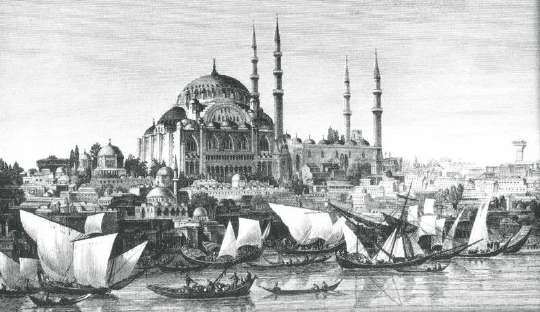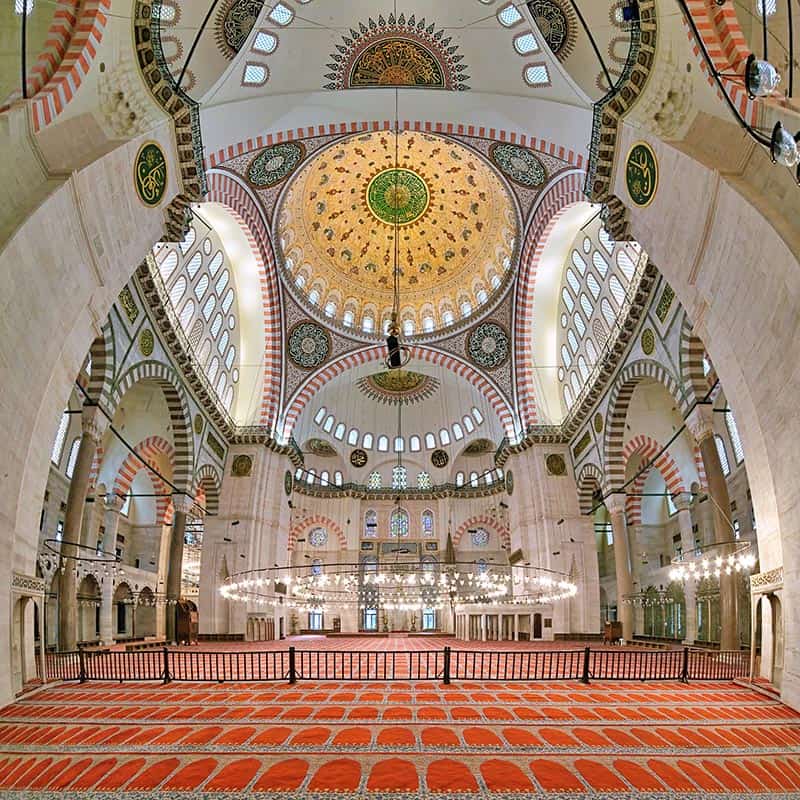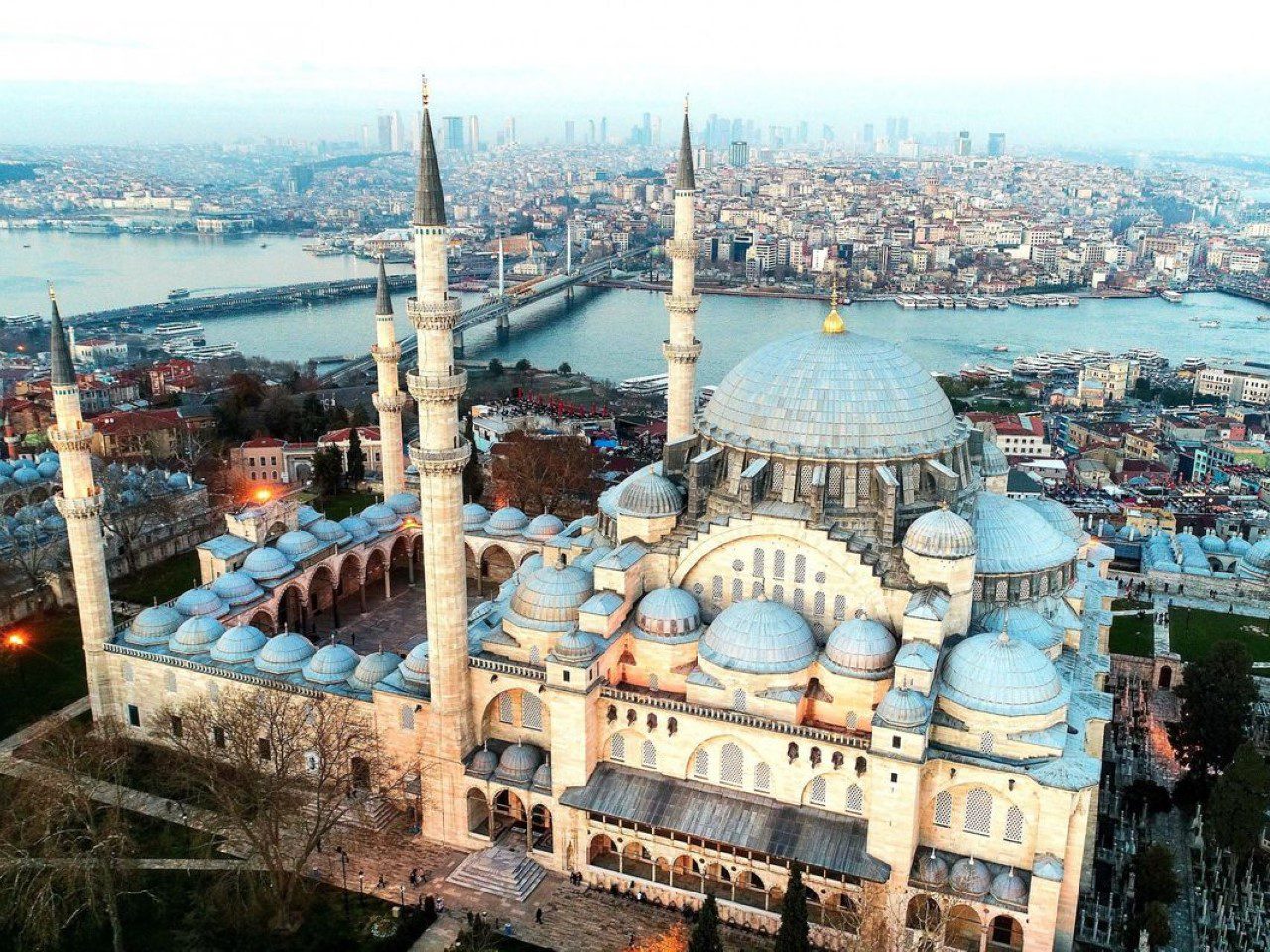The Suleymaniye Mosque, also known as Süleymaniye Camii in Turkish, is a testament to Istanbul, Turkey’s rich history and architectural prowess. Built during the Ottoman Empire, this magnificent Mosque is a true masterpiece designed by the renowned architect Mimar Sinan. With its grandeur, historical significance, and stunning architectural details, the Suleymaniye Mosque remains an iconic symbol of Istanbul’s cultural and religious heritage.
Introduction
Istanbul, a city straddles Europe and Asia, is renowned for its architectural wonders. Among these gems, the Suleymaniye Mosque stands tall, captivating visitors with its striking presence and timeless beauty. As one of the largest and most impressive mosques in Istanbul, it holds an important place in the hearts of locals and attracts tourists worldwide. Let’s delve into the architectural marvel that is the Mosque and explore its rich history and fascinating features.


Historical Significance and Architectural Brilliance
The Suleymaniye Mosque was commissioned by Sultan Suleiman the Magnificent in the 16th century when the Ottoman Empire was at its peak. Mimar Sinan, an exceptional architect of his time, was entrusted with designing and constructing this grand Mosque. The mosque complex also includes a madrasa (Islamic school), a hospital, a kitchen, and a hammam (bathhouse), forming a larger religious and social complex known as the Süleymaniye Külliyesi.
The architectural brilliance of the Mosque is evident in its harmonious blend of Islamic and Ottoman design elements. The main prayer hall boasts an impressive dome supported by four large pillars adorned with intricate calligraphy and geometric patterns. The interior is adorned with beautiful stained glass windows, intricate tile work, and elegant chandeliers, creating an awe-inspiring ambiance for worshippers and visitors alike.


Istanbul’s Cultural Landmark
The Suleymaniye Mosque serves as a place of worship and a symbol of the Ottoman Empire’s grandeur and architectural accomplishments. Situated on the Third Hill of Istanbul, it offers panoramic city views, including the Golden Horn and the Bosphorus. The Mosque’s impressive courtyard and towering minarets create a captivating sight that travelers can admire from different Istanbul locations.
Visitors to the Suleymaniye Mosque can explore its peaceful courtyard, visit the library that houses a vast collection of books and manuscripts, and marvel at the intricate details of its architecture. The mosque complex also includes the tomb of Sultan Suleiman and his wife, Hürrem Sultan, adding to its historical and cultural significance.


Suleymaniye Mosque: A Spiritual Haven
Beyond its architectural splendor, the Suleymaniye Mosque holds great spiritual significance for the local Muslim community. The Mosque’s main prayer hall can accommodate thousands of worshippers, providing a serene space for prayer and reflection. The call to prayer resonates through the air, inviting devotees to gather and partake in the rich traditions of Islamic worship.
The Mosque’s peaceful courtyard, with its meticulously maintained gardens and fountains, offers a tranquil setting for visitors to find solace and connect with their spirituality. Whether one is a devout Muslim or simply seeking a moment of tranquility, the Mosque offers a haven where the soul can find solace amidst the bustling city.
The Enduring Legacy of Suleymaniye Mosque
The Mosque plays a vital role in Istanbul’s cultural landscape. It serves as an active place of worship, drawing Muslims from all walks of life to come together in prayer and communal gatherings. The Mosque’s complex also houses educational institutions, including a madrasa, where students learn about Islamic teachings and traditions.
Moreover, the Mosque has become an enduring symbol of Istanbul’s architectural heritage, inspiring contemporary architects and scholars with its harmonious blend of Islamic and Ottoman design elements. It’s magnificence and historical significance make it a cherished site testament to the city’s rich past and vibrant present.


Conclusion
The Suleymaniye Mosque in Istanbul is a remarkable example of architectural genius by Mimar Sinan. Its grandeur, historical importance, and stunning design make it a must-visit cultural landmark. Step into the Mosque and experience beauty, tranquility, and architectural splendor. The Suleymaniye Mosque captures Istanbul’s captivating allure and represents its vibrant past.
Suleymaniye Mosque FAQs:
When was the Suleymaniye Mosque built?
The Mosque was built during the 16th century, commissioned by Sultan Suleiman the Magnificent.
Who was the architect of the Suleymaniye Mosque?
The Mosque was designed by the renowned Ottoman architect Mimar Sinan.
What is the significance of the Suleymaniye Mosque in Istanbul's history?
The Mosque represents the architectural prowess of the Ottoman Empire and stands as a cultural landmark of Istanbul.
Can visitors enter the Suleymaniye Mosque?
Yes, the Mosque is open to visitors. However, it is essential to dress modestly and follow proper etiquette when visiting religious sites.
What other attractions are near the Suleymaniye Mosque?
Nearby attractions include the Grand Bazaar, Spice Bazaar, and the historic Golden Horn. Exploring these sites allows visitors to experience the vibrant atmosphere of Istanbul's rich history and culture.


0 Comment